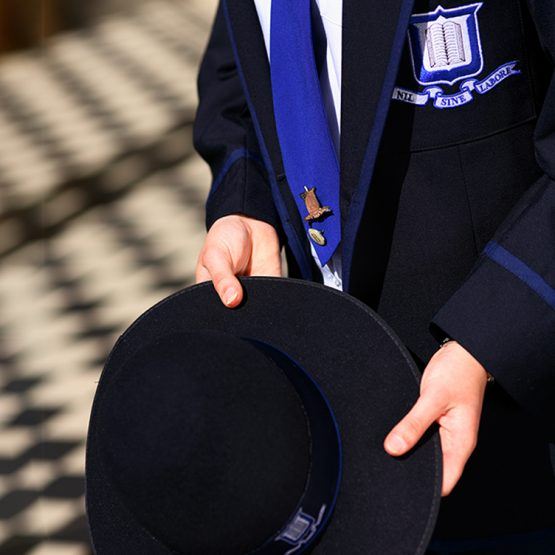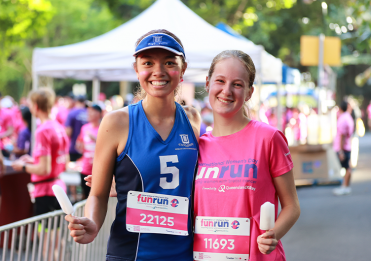‘At 3.30 p.m. we gathered in the Dining Room for afternoon tea, and to express our thanks to the School for allowing us this opportunity to meet again in situ. To commemorate the event we will present the School with an embroidered damask tablecloth for the Prize Table at Speech Day and other special occasions. Our maiden names will be embroidered around the edge, enabling each to become part of a continuing School tradition. I wonder if present seniors will hold a reunion in 2042, and what advances in education they will see!’ Cecily Fearnley (nee Sandercock) in the 1992 BGGS Magazine, p. 20).
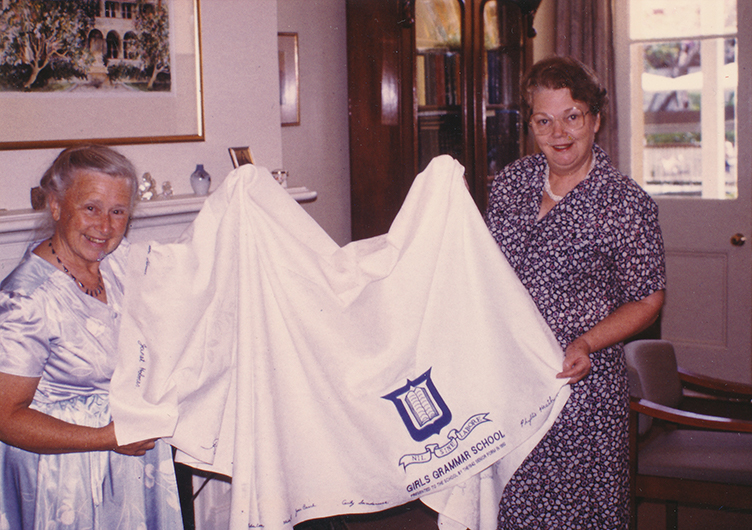
c1992 Mrs Cecily Fearnley nee Sandercock with Mrs Judith Hancock and the Speech Day tablecloth
This promise came to fruition when Mrs Cecily Fearnley nee Sandercock presented the 1942 graduates’ needlework to the Principal, Mrs Judith Hancock, in her office.
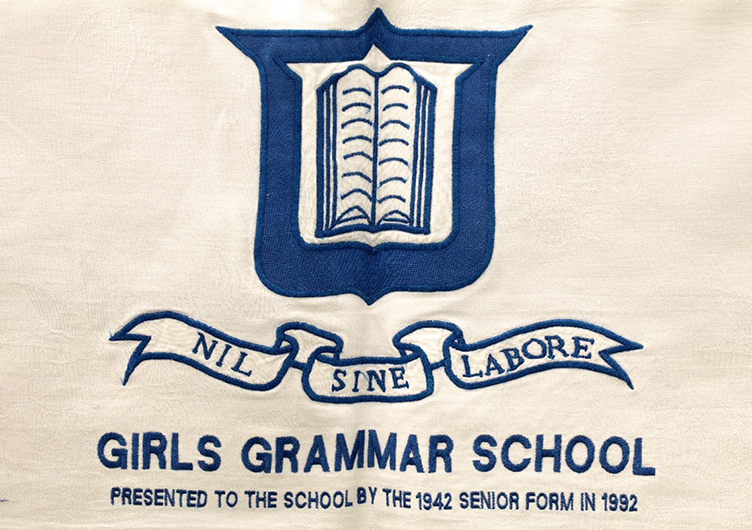
The School Badge centred on the tablecloth
The women of ’42 embroidered, in royal blue thread, each of their names around the 1300 mm x 2400 mm edge. There are 28 names on the white damask tablecloth, although there were 27 graduates listed in the Annual Report of 1942. Valmai Wrigley, who is included in the embroidery, left school in the ‘third quarter’ of 1942. However, her fellow students regarded her as very much ‘one of their cohort.’
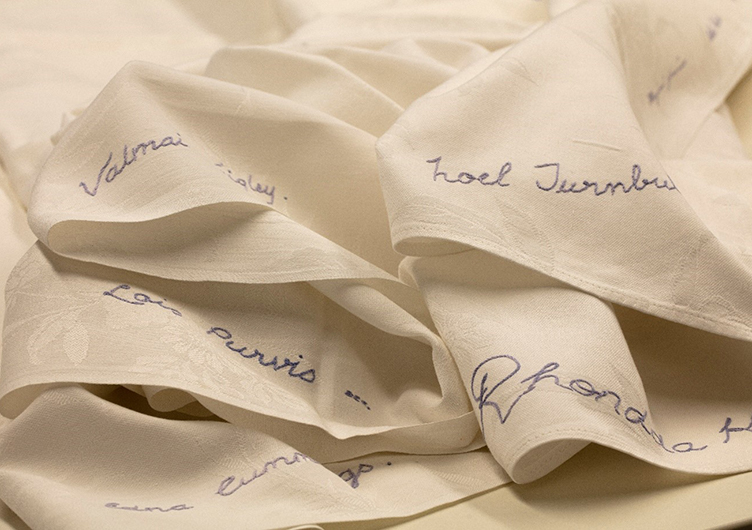
Detail of the 1992 Speech Day tablecloth
These 1942 students were special in one way and typical in another. They were students trained to cope with World War II bombings, carrying from the classroom to a prepared trench, a ‘square of khaki, a sit upon, and a peg’ when a city-wide alarm was sounded. The square of khaki was designed to cover the white blouse and hat; the ‘sit upon’ provided a seat if the trench was waterlogged, and the peg was meant to be placed between the teeth to prevent concussion. On the other hand, they also experienced all the traditional activities of a Grammar girl—they held positions of responsibility, played sport, performed in concerts, played instruments, sang hymns in Assembly every morning, attended classes, studied hard, and sat for examinations.
Eight prefects led the School, and 18 of the cohort successfully sat the Senior Public examinations. Noel Turnbull received the Special Prize for Sewing—the Boarders’ Prize. Perhaps, with these credentials, Noel took particular interest in the creation of the 1992 Speech Day tablecloth.
Their memories of Grammar experiences were vivid, and they so appreciated their school days, that they wanted to gift the School with something particular and lasting. The Speech Day tablecloth was the perfect blend of the formal and the personal, of school spirit and tradition, of memories and pride.
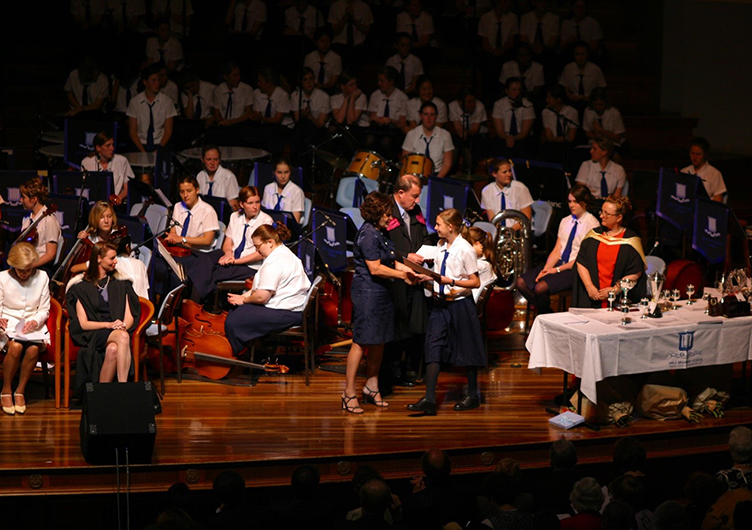
2002 Speech Day in the City Hall with the gifted tablecloth on display
The tablecloth has been used at each Speech Day ever since, draped elegantly over the prize table. Mrs Kristine Cooke (1967), who, for over 20 years presided over the distribution of the prizes (as well as setting up the table laden with glinting cups and goblets, certificates, book vouchers, and one special gold medal), speaks of the care taken in the positioning of this tablecloth stating, ‘that once the cloth is correctly positioned, centred and perfectly symmetrical, I know the placement of all the prizes will be easy from there.’
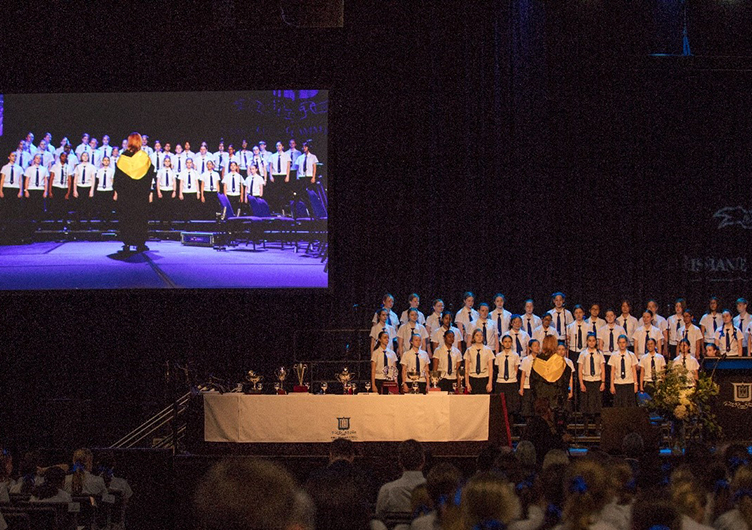
2020 Speech Day at the Brisbane Convention Centre with the prominent prize table and cloth
This piece of cloth so lovingly crafted represents much of what the School represents. It is a public symbol that the School values excellence in all aspects of school life, which is to be celebrated with dignity, tradition and ceremony. It is also a beautiful and subtle way to connect the present students with the women on whose shoulders they stand.
Ms Pauline Harvey-Short (1971)
Manager, School History and Culture
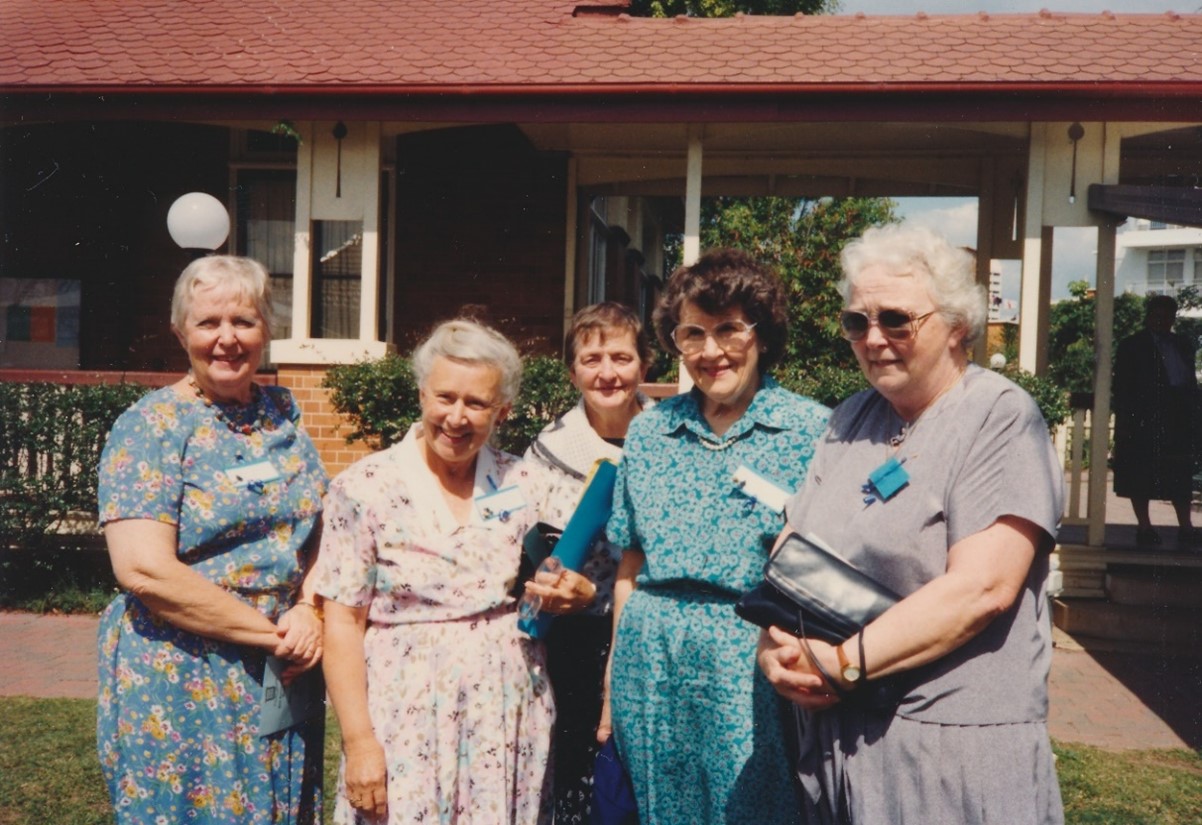
Class of ’42: The 1992 reunion where the promise of the tablecloth was made
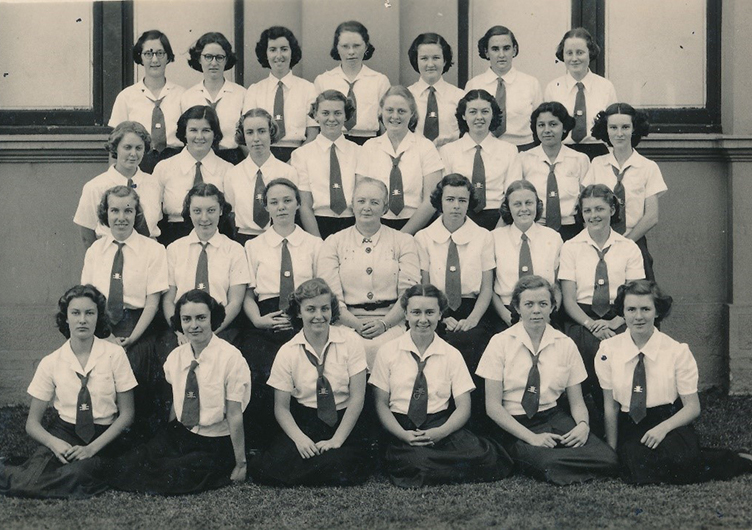
1942 VI Form with Miss Kathleen Lilley

